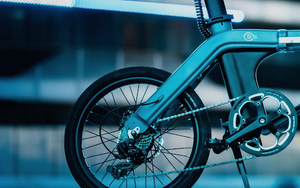Are Electric Bikes Allowed on Rail Trails?
Sep 11, 2024
Electric bikes, also known as e-bikes, have become increasingly popular in recent years. With their ability to provide an extra boost of power, they are a convenient and eco-friendly transportation option for many people. However, when it comes to using electric bikes on rail trails, there are some rules and regulations that riders must be aware of. In this article, we will delve into the topic of whether electric bikes are allowed on rail trails and explore the various aspects surrounding this issue.
Understanding Rail Trails
Rail trails are pathways that have been converted from former railway lines into recreational trails for walking, cycling, and other non-motorised activities. These trails often pass through scenic landscapes, making them perfect for leisurely rides and outdoor adventures. They provide a safe and enjoyable experience for both locals and tourists alike.
History and Purpose of Rail Trails
The concept of repurposing old railway lines into trail systems originated in the United States in the late 20th century. As railroads declined in popularity, communities saw the potential to transform these abandoned tracks into public spaces for recreational use. Rail trails offer a range of benefits, including promoting physical activity, preserving natural habitats, and boosting local economies through tourism.
Rail Trails Across the World
Since their inception, rail trails have gained popularity worldwide. From the Great Glen Way in Scotland to the Otago Central Rail Trail in New Zealand, cyclists and pedestrians have embraced these paths for their beauty and accessibility. Rail trails are not only highly valued for their recreational opportunities but also for their contribution to sustainable transport and the preservation of historical heritage.

The Rise of Electric Bikes
Over the past decade, electric bikes have emerged as a game-changer in the cycling industry. With advancements in battery technology, electric bikes have become more affordable, efficient, and powerful. These bikes are equipped with an electric motor that assists riders in pedalling, providing an extra boost of speed and reducing physical exertion. Every year, 50,000 – 60,000 electric bikes are sold in the UK.
The Evolution of Electric Bikes
The development of electric bikes began in the late 19th century but gained significant momentum in recent years. Early electric bicycles were bulky and had limited range, but with technological advancements, modern electric bikes are sleek, lightweight, and capable of travelling long distances on a single charge, such as the Eleglide T1 or the Himo Z20. With various classes and types available, there is an electric bike suitable for every rider's needs.
Benefits and Drawbacks of Electric Bikes
Electric bikes offer numerous advantages, including increased mobility, reduced carbon emissions, and improved physical fitness for riders of all ages and abilities. Commuting and running errands become easier, as the electric motor helps conquer hills and travel longer distances with less effort. However, it is vital to note that electric bikes also have certain drawbacks, such as higher upfront costs, maintenance requirements for batteries, and limited charging infrastructure.

Regulations on Electric Bikes
When it comes to using electric bikes on rail trails, it is crucial to understand the regulations put in place to ensure the safety and enjoyment of all trail users.
General Rules for Electric Bike Usage
The rules for using electric bikes vary depending on the location and trail management. In the UK, electric bikes are classified as "electrically assisted pedal cycles" (EAPCs) as long as they meet certain criteria, such as having a maximum power output of 250 watts and a top speed of 15.5 miles per hour. Riders must be at least 14 years old, and wearing a helmet is strongly recommended. It is essential to familiarise oneself with the specific regulations of individual rail trails before embarking on a ride.
Specific Regulations for Electric Bikes on Rail Trails
While rail trails generally allow non-motorised activities, including regular cycling, the permission for electric bikes can vary. Some rail trail organisations permit electric bikes, considering them within the same category as conventional bicycles. However, others restrict or ban electric bikes due to concerns about speed differentials, trail erosion, or conflicts with pedestrians. Riders should always check the regulations and policies of the rail trails they plan to visit.
Rail Trail Etiquette for Electric Bike Riders
When riding electric bikes on rail trails, it is essential to adhere to proper trail etiquette to ensure a positive experience for everyone.
Sharing the Trail with Pedestrians and Traditional Cyclists
Electric bike riders should yield to pedestrians and traditional cyclists, giving them ample space and warning when passing. Slowing down and using a bell or verbal communication can help prevent surprises and foster a harmonious trail atmosphere.
Speed and Noise Considerations for Electric Bikes
Electric bikes offer higher speeds than regular bicycles, requiring extra caution when sharing the trail. Electric bike riders should maintain a reasonable speed and avoid excessive acceleration or sudden stops. Additionally, minimising noise levels through well-maintained equipment and using trails during less busy times can contribute to a positive trail experience for all.
Advocacy for Electric Bikes on Rail Trails
Advocates of electric bikes on rail trails highlight their numerous benefits and argue for their inclusion within existing policies and regulations.
The Environmental Impact of Electric Bikes
Electric bikes are considered a greener alternative to traditional modes of transportation, as they produce no emissions during use. By encouraging people to use electric bikes on rail trails, communities can reduce pollution, conserve energy, and contribute to a more sustainable future.
Health Benefits and Accessibility of Electric Bikes
Electric bikes provide an excellent opportunity for individuals who may be less physically able to enjoy the benefits of cycling. The electric motor assists riders with mobility limitations or those recovering from an injury, allowing them to stay active and engage in outdoor activities that may otherwise be inaccessible. Promoting electric bikes on rail trails ensures inclusivity and promotes a healthier society.

Conclusion
In conclusion, the use of electric bikes on rail trails depends on the specific regulations and policies of each trail. While some rail trails endorse electric bikes, others have restrictions in place. It is essential for riders to familiarise themselves with these regulations and adhere to proper trail etiquette when riding electric bikes. By being aware of the rules, respecting other trail users, and advocating for the benefits of electric bikes, riders can help create a harmonious and sustainable trail environment for all.






